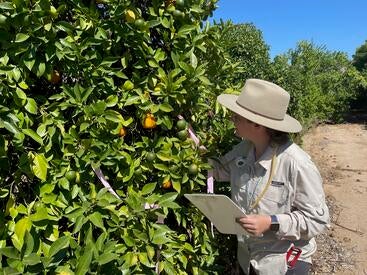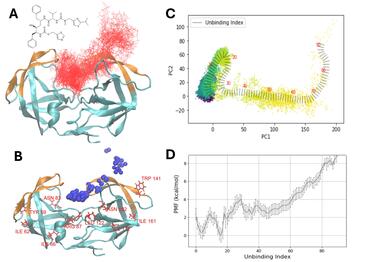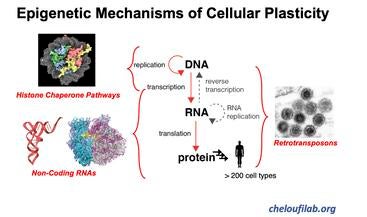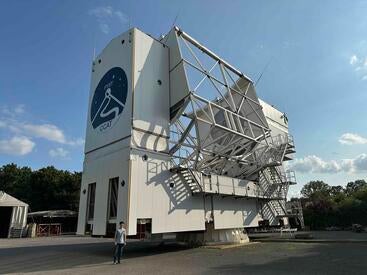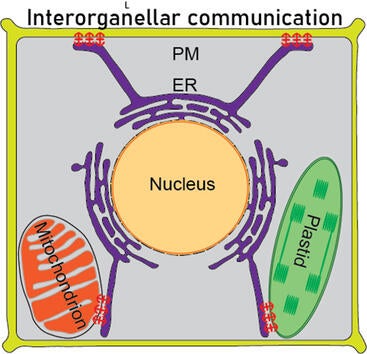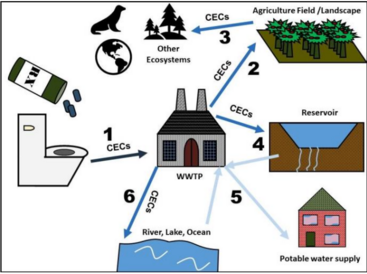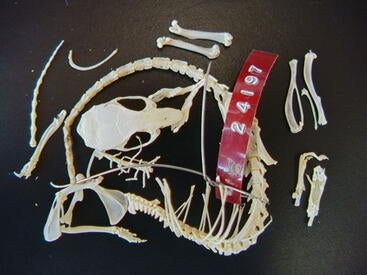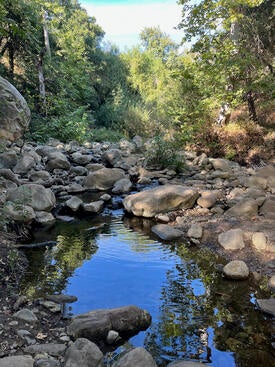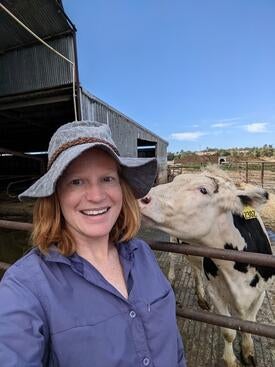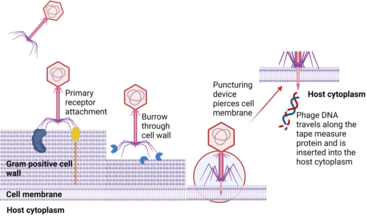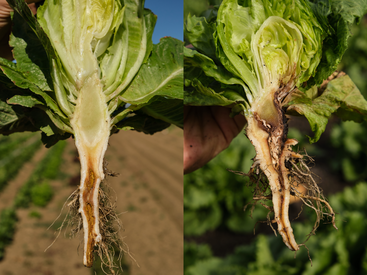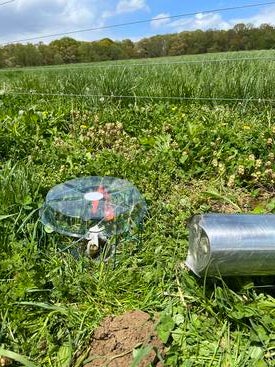Research In Science and Engineering (RISE) Program
RISE is a 10-week summer research program designed for rising sophomores, juniors, and incoming transfers, which takes place between June 22 - August 28, 2026.
Participants work under the supervision of a faculty mentor on a cutting-edge research project. The program features an immersive research experience with faculty mentorship, professional development, a supportive academic community, and an undergraduate symposium.
Through support from generous donors and institutional financial commitments to undergraduate research, the College of Natural & Agricultural Sciences (CNAS) provides a $5,000 stipend for scholars' full-time participation (35-40 hours per week) in the 10-week program. Undergraduate students from the CNAS Learning Communities ( CNAS Scholars), current CNAS transfer students (CNAS Transfer Connections), and incoming CNAS transfer students (Summer Bridge to Research) are eligible for these programs.
This paid summer undergraduate research opportunity is hosted by CNAS and collaborates with different on-campus partners. These programs include: Dynamic Genome Summer Scholars, California Alliance for Minority Participation, USDA NIFA Antimicrobial Resistance in Agriculture Program, and Digital Agriculture Fellowship. Each of these programs have their own application processes.
*For current UCR CNAS undergraduates, completion of your Learning Community will be reviewed as part of the selection process. The Learning Community requirement is waived for transfer students.
2026 Summer RISE Applications for CNAS Students will be available January 2026.
2026 SBTR Application for Incoming CNAS Transfer Students will be available January 2026.
For questions, please email RISE Manager, Noel Salunga, at noelgras@ucr.edu or review the RISE FAQs.
Below are previous 2025 faculty-mentor projects, so you are aware of the type of research projects available for students.
Faculty Name: Kurt Anderson
Program: Biology
Maximum Number of Students: 2
Where: In-person on campus
Student Level: Rising sophomore or junior (2nd or 3rd year continuing student).
Coursework Requirements: Not required, but at least introduction to ecology and/or entomology would be preferred
Description: We are studying climate change and other impacts on stream invertebrate biodiversity. Lab work involves sorting stream samples to find and identify stream insects. Helping collect samples in local streams is available for interested students, but not a requirement.
Website for Project: Anderson Lab
Faculty Name: Miguel Arratia
Program: Physics
Maximum Number of Students: 2
Where: In-person on campus
Student Level: Rising sophomore or junior (2nd or 3rd year continuing student).
Coursework Requirements: None
Description: We are building particle detectors for experiments in a future collider called EIC. We do this in UCR, then we travel to accelerator facilities to test them. We also do simulations to compare our data and refine our designs.
Website for Project: Arratia Research Group
Faculty Name: Ana Bahamonde
Program: Chemistry
Maximum Number of Students: 1
Where: In-person on campus
Student Level: Rising sophomore or junior (2nd or 3rd year continuing student).
Coursework Requirements: CHEM 8C
Description: Bahamonde lab focuses on designing and investigating asymmetric catalytic reactions and utilizes physical organic tools, data science, organometallic complexes, and visible light enable challenging bond disconnections.
Projects: Understanding light-mediated Ni catalysis using physical organic techniques and data science.
Website for Project: Bahamonde Group
Faculty Name: Bodil Cass
Program: Entomology
Maximum Number of Students: 2
Where: In-person with some off campus field work
Student Level: No preference
Coursework Requirements: N/A
Description: The Subtropical Fruit Integrated Pest Management (IPM) Laboratory conducts basic and applied research into arthropod pests and vectors of plant pathogens affecting specialty fruit crop industries including citrus, avocados, dates and coffee. Subtropical fruit crop production has been a longstanding economic, environmental and cultural force in California. As an Extension laboratory, our outputs are science-based guidelines used by growers for insect management decisions that directly impact yield or improve the sustainability of the farm.
Research projects will include laboratory experiments with live arthropod pests (e.g. banks grass mite, mealybugs, psyllids, aphids, scale insects) and/or beneficials (lacewings, parasitoids, predatory beetles), for example, evaluating insect mortality following pesticide exposure, competition assays and life history studies counting number of eggs laid per insect. Projects may include some field surveys for arthropods at Agricultural Operations fields or greenhouses, and sorting of insects collected in agricultural field surveys, and production of educational outreach materials (e.g. display drawer of insects found in avocados).
Website for Project: Subtropical Fruit Crops Integrated Pest Management (IPM) Entomology Laboratory
Faculty Name: Karthikeyan Chandrasegaran
Program: Entomology
Maximum Number of Students: 2
Where: In-person on campus
Student Level: No preference
Coursework Requirements: No
Description: Our summer research project focuses on understanding how growing conditions influence mosquito larval behavior and the ecological implications of these behaviors. Students will investigate how environmental factors such as resource availability, competition, and population density affect larval movement, feeding, and habitat selection. By linking larval behavior to developmental outcomes like size and survival, this project aims to uncover critical connections to mosquito fitness and their role in disease transmission. The findings will enhance our understanding of how environmental stressors shape mosquito populations and the dynamics of mosquito-borne diseases. This project provides hands-on experience in behavioral ecology, experimental design, and data analysis, fostering a deeper appreciation for the complexities of vector biology and public health.
Projects: Our summer research project explores the interplay between larval growing conditions and the development of insecticide resistance in mosquitoes. Students will examine how environmental factors such as resource availability, crowding, and temperature influence the physiological traits associated with resistance, including survival under insecticide exposure. By linking these traits to larval development, the project seeks to uncover how stress during early life stages impacts resistance evolution and its ecological consequences. This research has critical implications for understanding mosquito population dynamics and improving vector control strategies. Participants will gain hands-on experience in toxicology, insect behavior, and data interpretation, contributing to the broader fight against mosquito-borne diseases.
Website for Project: KC Mosquito Lab
Faculty Name: Chia-en Chang
Program: Chemistry
Maximum Number of Students: 2
Where: In-person on campus
Student Level: No preference & open to community college students (8-week program track)
Coursework Requirements: Chem1 series, some physics and math courses
Description: Use deep learning and machine learning (AI) to sample protein conformations and reveal the physical chemistry which lead to protein dynamics and function, and drug-protein binding thermodynamics and kinetics.
Figure shows a drug unbinding from it's protein target and how we use computer simulation and AI to understand drug-protein unbinding free energy landscape.
Website for Project: Chang Group
Faculty Name: Sihem Cheloufi
Program: Biochemistry
Maximum Number of Students: 2
Where: In-person on campus
Student Level: No preference
Coursework Requirements: N/A
Description: The project will investigate the role of endogenous retroviruses (ERVs) in development and disease. ERVs are ancient viral insertions that constitute nearly half of mammalian genomes. These elements can serve as critical assets for gene regulation and evolution or pose risks to the host. Some ERV remnants encode RNA and protein molecules that have been domesticated by host cells. This study will focus on characterizing the expression of these elements in normal and diseased cells and utilizing gene-editing techniques to explore their functions.
Website for Project: Cheloufi Lab
Faculty Name: Steve Choi
Program: Physics
Maximum Number of Students: 4
Where: In-person on campus
Student Level: Rising sophomore or junior (2nd or 3rd year continuing student)
Coursework Requirements: Introductory physics series
Description: The primary focus of our research is on understanding the formation and evolution of the universe through developing sensitive instruments for new telescopes to enable more precise measurements.
Projects: The summer research projects will include the development of new tools and infrastructure for testing superconducting detectors for astronomical observations. Other projects include developing new codes to forecast the expected cosmological and astrophysical constraints with our upcoming telescope.
Website for Project: experimentalcosmology.ucr.edu
Faculty Name: Christopher Clark
Program: Biology
Maximum Number of Students: 1
Where: In-person with some off campus field work
Student Level: Rising sophomore or junior (2nd or 3rd year continuing student)
Coursework Requirements: N/A
Description: The summer RISE student will either work on a project on why owls have quiet flight; or on a project on hummingbird flight. Our owl research seeks to ask how and why owls fly quietly. One set of experiments will be to take owl wings and place them in our acoustic wind tunnel, to document the sounds produced; and then to manipulate the wings (such as by applying hairspray) and then see how the hairspray affects sound that is produced. The student will learn to use microphones and sound recordings. Experiments on hummingbird flight are also possible.
Website for Project: Animal Aeroacoustics Lab
Faculty Name: Katie Dehesh
Program: Biology
Maximum Number of Students: 3
Where: In-person on campus
Student Level: No preference
Coursework Requirements: N/A
Description: Signaling Networks of Adaptive Responses in Bacteria and Plants
Website for Project: Dehesh Lab
Faculty Name: Emma Gachomo
Program: Biology
Maximum Number of Students: 2
Where: In-person on campus
Student Level: Transfer or rising sophmore
or junior (2nd or 3rd year continuing student)
Coursework Requirements: Completed Biol 5C
Description: Different types of chemicals of emerging concern (CECs) such as pharmaceuticals enter the wastewater system through disposal of unused prescription drugs or waste from animal bodies. Our lab investigates the effects CECs of found in recycled wastewater on plant-microbe interactions with the goal of reducing pollution. The project involves molecular biology lab work, microbiology, and bioinformatics.
Faculty Name: Ted Garland
Program: Biology
Maximum Number of Students: 2
Where: In-person on campus
Student Level: No preference
Coursework Requirements: N/A
Description: Study the behavior, physiology, and/or anatomy of mice that have been selectively bred to run voluntarily on wheels.
Project: High Runner Mice
Website for Project: Garland Lab
Faculty Name: Joseph Genereux
Program: Chemistry
Maximum Number of Students: 2
Where: In-person on campus
Student Level: No preference
Coursework Requirements: Completion of BIOL 5A or BIOL 020
Description: The Genereux laboratory develops mass spectrometry-based technology to interrogate protein misfolding and mistargeting in the cell. A typical project would involve using our technology to identify the cellular proteins that are damaged by an environmental toxicant (e.g. pesticides, heavy metals, pollutants).
Website for Project: Genereux Lab
Faculty Name: Jia Gou
Program: Mathematics
Maximum Number of Students: 1
Where: In-person on campus
Student Level: Rising sophomore or junior (2nd or 3rd year continuing student) & open to community college students (8-week program track)
Coursework Requirements: Applicants should have taken courses on programming languages, such as python, C++ or Matlab, and introduction to physics courses.
Description: My group is working on modeling cell behaviors, including cell migration, cell morphology change, cell polarization, using computational models.
Website for Projects: Jia Gou: Projects
Faculty Name: Weifeng Gu
Program: Cellular, Molecular, and Developmental Biology
Maximum Number of Students: 2
Where: In-person on campus
Student Level: No preference & open to community college students (8-week program track)
Coursework Requirements: No
Description: Investigate how PIR-2 regulates gene expression.
Projects:
1) Generate mutants to study PIR-2 functions in intestine
2) Generate mutant to study PIR-2 functions in the neurons both using genetics including CRISPR.
Faculty Name: Allison Hansen
Program: Entomology
Maximum Number of Students: 1
Where: In-person on campus
Student Level: Rising sophomore or junior (2nd or 3rd year continuing student)
Coursework Requirements: N/A
Description: Research on the evolution of insect-microbe interactions, focusing on the mechanisms of gene expression. This includes laboratory experiments on insects and the application of microbiology techniques.
Website for Projects: Allison Hansen Lab
Faculty Name: Tamara Harms
Program: Environmental Sciences
Maximum Number of Students: 2
Where: In-person on campus with some off campus field work
Student Level: No preference
Coursework Requirements: N/A
Description: Research in the Harms Lab focuses on watershed hydrology and biogeochemistry. We study carbon, nitrogen, and phosphorus cycles in soils and streams. Current projects are addressing carbon and nutrient retention and transport in response to thawing permafrost in the Arctic and boreal forest, fire in arid lands, and urbanization in Southern California.
Projects: Potential research projects include: studying combustion losses of carbon and nutrients from soils, measuring the reactivity of dissolved carbon exported from urban or burned areas, and assessing nutrient limitation of algae in streams.
Website for Projects: Harms Lab
Faculty Name: Richard Hooley
Program: Chemistry
Maximum Number of Students: 2
Where: In-person on campus
Student Level: Rising sophomore or junior (2nd or 3rd year continuing student)
Coursework Requirements: Organic chemistry, Chem 008A or Chem 008B
Description: Synthesis of biomimetic molecules for sensing and catalysis applications.
Website for Projects: Hooley Group UCR
Faculty Name: Francesca Hopkins
Program: Environmental Sciences
Maximum Number of Students: 1
Where: In-person on campus with some off campus field work
Student Level: No preference
Coursework Requirements: N/A
Description: We are seeking a student intern for summer research on greenhouse gas emissions from agriculture. Interns will divide their time between field research based in the San Joaquin Valley, and in residence at UC Riverside. Interns will gain experience in the design and execution of field measurements, including through collecting and analyzing atmospheric measurements such as from operating uncrewed aircraft and greenhouse gas analyzers. Interns will be able to develop and test research questions and learn to communicate scientific findings. Our lab has a strong emphasis on mentoring and support for broadening participation in atmospheric science research. Ideal applicants are motivated to learn, to carry out atmospheric measurements in the outdoor environments, and to work as part of a team.
Website for Projects: Greenhouse Gas Emissions Lab
Faculty Name: Andrew Joe
Program: Physics
Maximum Number of Students: 3
Where: In-person on campus
Student Level: No preference
Coursework Requirements: Introductory Physics series (UCR 40ABC or 41ABC) is strongly preferred
Description: Two-dimensional (2D) materials are a class of materials that can be reduced down to a thickness of a single atomic layer while maintaining exciting electronic and optical properties. Individual layers of different types of materials can be isolated and stacked to create new material heterostructures that can have drastically new properties. The Joe Lab focuses on studying these 2D material heterostructures using electronic transport and optical spectroscopy techniques to discover new physical phenomena. Undergraduates in the lab will have a chance to exfoliate bulk 2D materials (graphite, hBN, TMDs) and learn to assemble these heterostructures. They can also be involved with new lab setup projects - designing measurement equipment and/or python coding measurement software.
Website for Project: The Joe Lab
Faculty Name: Fatemeh Khodadadi
Program: Microbiology & Plant Pathology
Maximum Number of Students: 2
Where: In-person on campus
Student Level: No preference
Coursework Requirements: No coursework is required.
Description: The student will be involved in the lab and greenhouse to work on a project focused on lemon rootstock susceptibility, DNA/RNA extraction, fungal isolation etc.
Website for Project: Subtropical Trees Pathology
Faculty Name: Ying-Hsuan Lin
Program: Environmental Sciences
Maximum Number of Students: 2
Where: In-person on campus
Student Level: No preference
Coursework Requirements: No
Description: Our research primarily focuses on understanding the sources, composition, and formation mechanisms of atmospheric aerosols, and how they influence air quality, human health, and the climate system. We utilize advanced analytical instruments and theoretical calculations to characterize chemical processes controlling the composition of atmospheric aerosols, and we investigate human health effects using multi-omics approaches to identify biological perturbations associated with pollutant exposure. Our lab aims to establish a mechanistic understanding of air pollution-induced human health effects and climate impacts.
Projects:
Potential research project 1: Formation and evolution of atmospheric organic aerosols
Potential research project 2: Characterization and remediation of per- and polyfluoroalkyl substances (PFAS) in contaminated environmental matrices.
Potential research project 3: Chemical and toxicological characterizations of e-cigarette vaping emissions.
Potential research project 4: Environmental and health impacts of disposable e-cigarette waste.
Website for Project: Lin's Atmospheric Chemistry and Environmental Toxicology Research Group
Faculty Name: Wei Liu
Program: Geology
Maximum Number of Students: 3
Where: Combination of in person and online connections
Student Level: No preference
Coursework Requirements: N/A
Description: Our research focuses on the role of ocean in climate change and climate variability.
Faculty Name: Morris Maduro
Program: Cellular, Molecular, and Developmental Biology
Maximum Number of Students: 2
Where: In-person on campus
Student Level: Rising sophomore or junior (2nd or 3rd year continuing student).
Coursework Requirements: Biol 020 preferred
Description: The Maduro lab studies how genes expressed in early embryos direct the specification of the gut in the nematode Pristionchus. We are also interested in how developmentally important genes have evolved over time in the genus Caenorhabditis.
Projects: Students will do PCR and gel electrophoresis, microscopy, and imaging.
Website for Project: Maduro Lab
Faculty Name: Allen Mills
Program: Physics
Maximum Number of Students: 4
Where: In-person on campus
Student Level: Rising sophomore or junior (2nd or 3rd year continuing student)
Coursework Requirements: N/A
Description: Students will work with graduate students on experiments with antimatter, measuring positron mobilities in solids, testing to see if positrons fall up or down, and making the first measurement of an antimatter Feshbach resonance.
Faculty Name: Olakunle Olawole
Program: Microbiology
Maximum Number of Students: 2
Where: In person on campus
Student Level: Rising sophomore or junior (2nd or 3rd year continuing student)
Coursework Requirements: BIOL 020
Description: Phage hunting for sustainable management of bacterial plant diseases. Students will have the opportunity to isolate bacteriophages from environmental sources and characterize them based on morphological, host-range, microscopic, genomic, and physiological features.
Faculty Name: Kate Ostevik
Program: Biology
Maximum Number of Students: 2
Where: In person on campus
Student Level: No preference
Coursework Requirements: No
Description: Our lab has previously demonstrated that some sunflower populations selectively accept pollen, favoring pollen from plants in similar environments for successful fertilization and seed production. We would like to extend this finding to other populations of sunflowers to learn more about how new species evolve. This project involves conducting controlled crosses between plants, germinating seeds, performing DNA extractions, and running PCR analyses.
Website for Project: Ostevik Lab
Faculty Name: Alex Putman
Program: Microbiology
Maximum Number of Students: 3
Where: In person on campus
Student Level: No preference
Coursework Requirements: N/A
Description: Our lab studies pathogens of vegetable and some fruit crops. One disease we are working on is Fusarium wilt, caused by the fungus Fusarium oxysporum. This pathogen lives in the soil, infects the roots, and clogs the water-conducting tissue of the plant. There are many strains of F. oxysporum, each of which causes disease on only one host. We are mainly working with the strains infecting lettuce, celery, or cilantro. Fusarium wilt can be mitigated using cultivars (different types) of plants with some immunity to the pathogen. However, we recently found outbreaks of Fusarium wilt on immune types of lettuce, suggesting that a new strain of the pathogen has emerged. The main objective of our current research is to characterize this new strain, determine where it has spread, how aggressive it is and at what temperature it causes disease, and if other types of lettuce are effective against it. This work involves diagnosing diseased plants and culturing the fungus from infected plants onto artificial media. Then we infect different lettuce cultivars in the greenhouse to confirm pathogenicity, and perform molecular identification using PCR and qPCR. The desired impact of this work is to provide knowledge to farmers on which strain of Fusarium wilt is present in their fields so they can choose an appropriate immune cultivar of lettuce that suppresses disease. The overall goal of our lab is to improve the economic, environmental, and social sustainability of crop production in California.
Website for Project: Putman Lab
Faculty Name: Erin Rankin
Program: Entomology
Maximum Number of Students: 1
Where: In-person on campus
Student Level: No preference
Coursework Requirements: Just an interest in ecology and nature
Description: We are interested in understanding interactions between herbivores, their plant hosts and flower-visiting insects. In particular, we are interested in looking at how native and invasive ants influence the herbivore communities on native sagescrub plants. This would include both surveying insects on wild populations of sagescrub plants on campus and in the Box Springs Reserve, as well as cage studies in the lab where we will quantify the predatory and behaviioral interactions between ants and herbivores.
Projects: We are also interested in whether the amount of herbivory affects floral production and the number and diversity of pollinators visiting flowers.
Website for Project: Wilson Rankin Lab
Faculty Name: Carolyn Rasmussen
Program: Plant Biology
Maximum Number of Students: 1
Where: In-person on campus
Student Level: No preference
Coursework Requirements: None
Description: The student will join a project understanding how plants grow, with a focus on how cell division controls the types of cells generated and more broadly influences the outcome for plant development. Skills in molecular biology, genetics, and cell biology will be learned.
Website for Project: Rasmussen Lab
Faculty Name: Crystal Reynaga
Program: Biology
Maximum Number of Students: 1
Where: In-person on campus
Student Level: No preference
Coursework Requirements: BIOL 5B or equivalent
Description: The Reynaga Lab investigates questions that lie at the intersection of musculoskeletal physiology and movement mechanics. Work in my lab aims to understand how animal movement can be affected in complex environments, from the whole animal scale to the muscle level. My experimental approaches examine shifts in limb anatomy, the nervous system, and muscle-tendon mechanics to determine what drives changes to locomotor performance. My lab employs an integrative approach using modern physiological and engineering tools, such as electromyography, muscle imaging, biological materials testing, high-speed videography, computer vision, and 3D printing.
Website for Project: Reynaga Lab
Faculty Name: David Reznick
Program: Biology
Maximum Number of Students: 1
Where: In-person on campus
Student Level: No preference
Coursework Requirements: N/A
Description: The livebearing fish family, Poeciliidae, represents an intriguing combination of reproductive traits with internal fertilization as well as the use of sperm bundles. Males in this family used a modified anal fin called a gonopodium to transfer sperm in the form of spermatozeugmata to the female. Poeciliidae species also have variation in both male traits, such as coloration, size, ornamentation and courtship, and female traits, such as placentation and superfetation. The majority of this variation deals with precopulatory sexual selection, but little is known about family wise variation in post-copulatory sexual selection. For example, species are known to have bundles and it is hypothesized that these assist in transporting sperm. However, not much is known about variation in bundles and how that might affect sperm competition and subsequently fertilization success. One aspect of sperm bundles that remains unexplored is the number of sperm per bundle. Some poeciliids have around 2,000 sperm per bundle whereas others have 22,000. Why do we see such a discrepancy in sperm per bundle? Throughout this project, we will explore how much variation exists in the number of sperm per bundle across the family and how this variation correlates with other reproductive traits.
Faculty Name: Elizabeth Rowen
Program: Entomology
Maximum Number of Students: 2
Where: In person with some off campus field work
Student Level: No preference
Coursework Requirements: None
Description: Dung beetles provide important ecosystem services in pasture and rangelands. Students would collect and identify dung beetles from a range of habitats across CA, focusing mostly on the foothills of the Sierras (both Western and Eastern Sierras). Projects could include comparing dung type, geographical location in CA, phenology etc.
Website for Project: Rowen Insect Agroecology Lab
Faculty Name: Wendy Saltzman
Program: Biology
Maximum Number of Students: 1
Where: In-person on campus
Student Level: No preference
Coursework Requirements: BIOL 5A, 5LA or 20, 5B, and 5C
Description: Our research focuses on parenting in a biparental rodent species, in which both mothers and fathers provide extensive care to their offspring. The summer project will examine how pair formation and the onset of parenthood affect plasticity in the brains of males and females.
Website for Project: Saltzman Lab
Faculty Name: Viji Santhakumar
Program: Neuroscience
Maximum Number of Students: 2
Where: In-person on campus
Student Level: No preference
Coursework Requirements: N/A
Description: The interaction between immune signaling and neurons can influence development of neurological disorders. We have recently identified that an innate immune receptor TLR4 can influence birth of new neurons in the adult brain after brain injury. The project will evaluate whether TLR4 signaling in the newborn neurons contributes to their abnormal function after brain injury. Specifically, the project, in collaboration with a postdoctoral fellow, will involve performing behavioral and immunobiological experiments and analysis of genetically modified mice with selective deletion of TLR4 in newborn neurons and specific neuronal subtypes.
Website for Project: Santhakumar Lab
Faculty Name: Marko Spasojevic
Program: Biology
Maximum Number of Students: 2
Where: In person with mostly off campus field work
Student Level: No preference & open to community college students (8-week program track)
Coursework Requirements: N/A
Description: Forests play key roles in biodiversity maintenance and climate regulation. Globally, forests support over half of all described species and provide many valuable ecosystem functions and services such as timber, clear air, clean water, and carbon storage. However, forests worldwide are being threatened by habitat loss, drought, and changing fire regimes, which have all resulted in losses to biodiversity and alterations to key ecosystem functions and services. Understanding and predicting how forests will respond to ongoing and pervasive changes to the environment is critical for biodiversity conservation and for the management and maintenance of ecosystem services. To address this, the Spasojevic Ecology lab at UC-Riverside has established a 4ha Forest Dynamics Plot (FDP). Briefly, within the FDP every free-standing woody stem (live or dead) greater than 1cm in diameter has been identified to species, mapped, measured, and tagged for long term monitoring. In establishing this plot, we have observed that many of the Conifers are dead or dying and that there are few Conifers recruiting into this forest. On the other hand, very few Oaks have died and there are many Oaks recruiting into the forest. These patterns suggest a potential shift in the composition of the forest from a mixed Oak-Conifer Forest to a more Oak dominated system. This change in the composition of the forest can have important ramifications for carbon storage, as Oaks are slower growing than Pines, as well as implications for the rest of the plants and animals that depend on these species. We are seeking students that are interested in plant ecology and climate change who is seeking to gain field experience (spending most of their research time in the field).
Website for Project: Spasojevic Lab
Faculty Name: Shawn Westerdale
Program: Physics
Maximum Number of Students: 4
Where: In-person on campus
Student Level: No preference & open to community college students (8-week program track).
Coursework Requirements: Programming experience is preferred but not required.
Description: Dark matter makes up 85% of the mass of all matter in the universe, but the Standard Model of particle physics describes no particles that might account for it -- so far, we only know it exists through its effects on gravity. The group with Shawn Westerdale seeks to understand the nature of dark matter through the method of direct detection: building large detectors deep underground, and looking for very rare events where a dark matter particle might interact with the detector.
Projects: Students will participate in research into dark matter and neutrino detection, with opportunities to participate in data analysis, simulations, and design work for current and future dark matter and neutrino detectors, as well as research and development for future detector technologies.
Website for Project: Dark Matter and Neutrino Lab
Faculty Name: Yadong Yin
Program: Chemistry
Maximum Number of Students: 1
Where: In-person on campus
Student Level: No preference
Coursework Requirements: Prior experience with Chemistry Laboratory is required
Description: Synthesis and assembly of nanostructures
Projects: Fabrication of smart materials
Website for Project: Yin Group
Faculty Name: Haofei Zhang
Program: Chemistry
Maximum Number of Students: 1
Where: In-person on campus
Student Level: Rising sophomore or junior (2nd or 3rd year continuing student)
Coursework Requirements: General Chemistry Series
Description: This summer research project will focus on studying organic aerosol composition and chemistry by using several laboratory analytical instruments. The main goal is to understanding the changes in aerosol functional groups through their lifetime in the atmosphere. The RISE student will assist in analyzing aerosol samples.
Website for Project: Haofei Zhang Research Group
Faculty Name: Jingsong Zhang
Program: Chemistry
Maximum Number of Students: 2
Where: In-person on campus
Student Level: No preference
Coursework Requirements: CHEM 1C
Description: Atmospheric chemistry. Chemical instrumentation. Air pollution measurements. Reaction mechanisms of atmospheric reactions.
Projects: Chemical vapor deposition reactions. Chemical kinetics. Mass spectrometry. High temperature chemistry. Combustion chemistry.
Website for Project: Zhang Group

